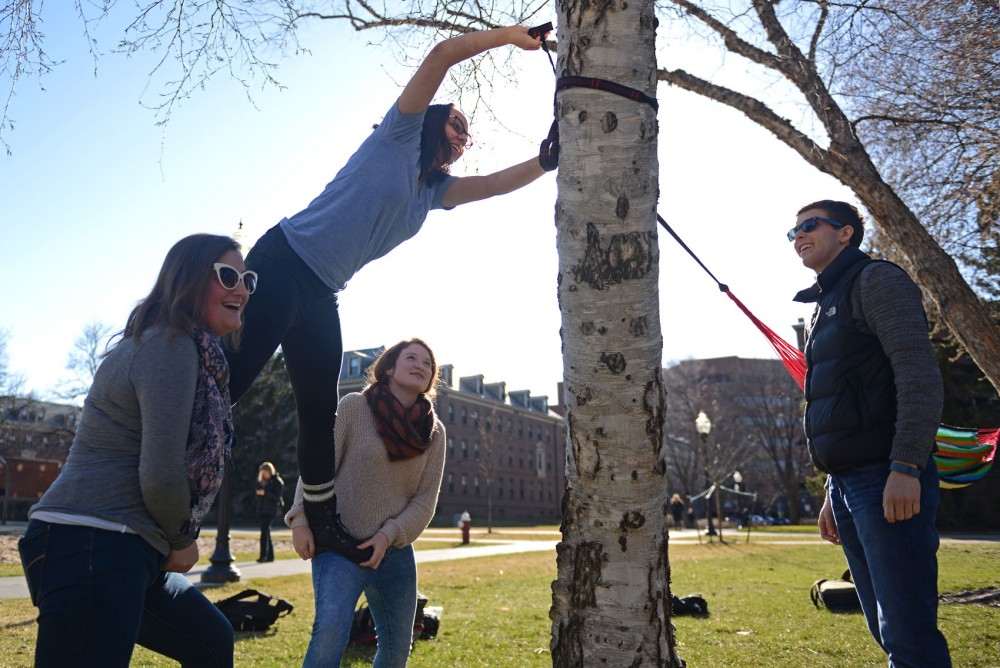As Big 10 conference schools have grown more diverse over the years, the universities often show higher levels of diversity than their states.
For universities in the Big 10, growing diversity over the years, through programs and initiatives, has been a priority. But these efforts need to be negotiated against federal laws that prohibit specific diversity targets and demand an admissions approach that can only partially take race into account.
In Minnesota over the past seven years, the state’s total population has seen a modest increase in diversity. In 2010, Minnesota’s population was 83.2 percent white, while in 2016, that dropped almost 3 percent. In comparison, the state’s African American population increased from 5.1 to 6 percent. The Hispanic population has risen from 4.7 to 5.2 percent.
Outpacing the state, the University of Minnesota has shifted from a 73.7 percent white undergraduate student body in 2010 to 69.1 percent white in 2016.
“We’re content with the progress we’ve made, realizing that we can do better,” said Bob McMaster, vice provost and vice president for undergraduate education at the University of Minnesota.
McMaster said the University’s recruitment in urban high schools and a variety of scholarship programs helped build a diverse population.
While programs and recruitment initiatives have been successful, more aggressive ideas have been debated among University leaders.
In an unsuccessful push in Feb. 2016, the University’s Board of Regents debated a resolution which aimed to have the school’s racial and ethnic demographics mirror those of the Twin Cities.
Regent Abdul Omari, who proposed the resolution, said while increased diversity at the University needs to be a goal – it is more nuanced than that.
Omari said the University should make equity, not equality, the goal. This means focusing beyond broad racial categories to specific niches of the racial groups — like focusing on the Hmong community, rather than Asian students as a whole.
“If we compare our student data to the state, we’re going to end up patting ourselves on the back,” he said. “We need to ask ourselves if this is equality or if this is equity.”
Across the Big 10
At one of the Big 10’s most diverse campuses, the University of Illinois at Urbana-Champaign, retention as well as recruitment has become a priority. The school hosts an undergraduate student body of 46 percent white students, over 10 percent Hispanic students, almost 6 percent black students and 17.5 percent Asian students.
Kevin Pitts, Vice Provost for Undergraduate Education at the University of Illinois, said much of its diversity is a result of their location, but a focus on retention with things like minority culture classes has contributed.
At other universities in the Big 10, similar initiatives exist. The University of Michigan – Ann Arbor, started a pilot scholarship which focuses on enrolling high-achieving, low-income students from the state, said Rick Fitzgerald, assistant vice president for public affairs at the school.
“If students don’t feel welcome, they’re going to be looking for other places to go,” Pitts said. “Then we’re not doing our jobs very well.”
Retention for students of color at the University of Minnesota has improved, along with graduation rates.
Between the fall semesters of 2015 and 2016, the University of Minnesota retained 93.6 percent of its students of color and 93.2 percent of its white students.
While white students still have a higher four-year graduation rate, graduation rates for students of color on the Twin Cities campus have climbed from 28 percent in 2002 to 57 percent in 2012.
“We need to be having the same success with graduation rates [as white students],” McMaster said.
















